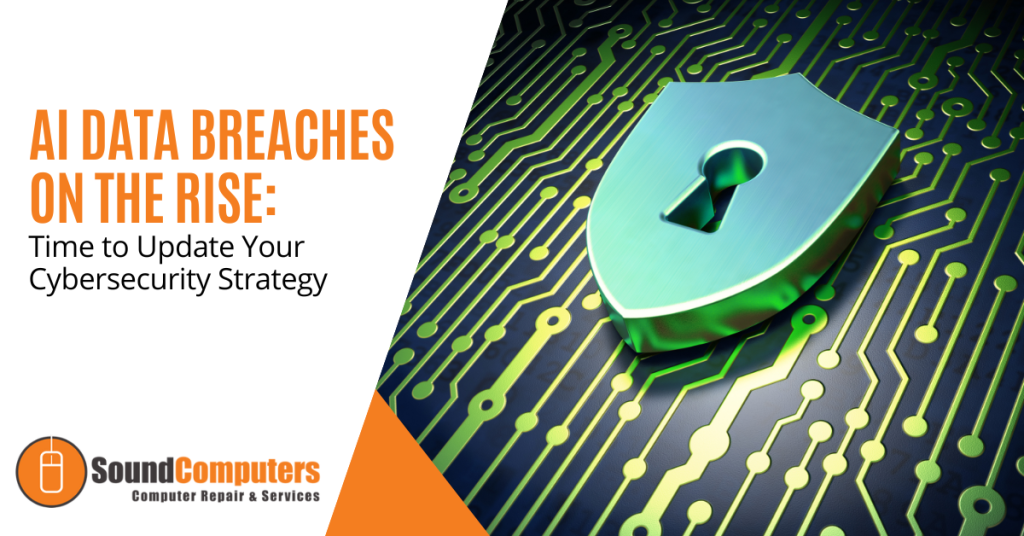
In today’s digital age, artificial intelligence (AI) has become an integral part of numerous industries and revolutionized the way we live and work. From personalized recommendations on streaming platforms to advanced medical diagnostics, AI has significantly enhanced efficiency and productivity.
However, with this increased reliance on AI comes the potential for data breaches and security vulnerabilities. As AI technology continues to evolve, so do the methods used by cybercriminals to exploit it. In this article, we will explore the rising threat of AI data breaches and provide insights on how businesses can update their cybersecurity strategy to mitigate these risks effectively.
Understanding AI Data Breaches
The Intersection of AI and Cybersecurity
AI systems are powered by algorithms that analyze vast amounts of data to make predictions, automate tasks and detect patterns. While AI offers numerous benefits, it also introduces new challenges in the realm of cybersecurity. Cybercriminals are leveraging AI techniques to launch sophisticated attacks that are more difficult to detect and mitigate. These attacks can range from adversarial attacks that manipulate AI models to data poisoning attacks that corrupt training data.
Types of AI Data Breaches
AI data breaches can manifest in various forms that include unauthorized access to sensitive data, manipulation of AI algorithms and exploitation of AI-powered systems. For example, adversaries may exploit vulnerabilities in AI models to extract confidential information or manipulate automated decision-making processes. Additionally, AI-generated deepfakes can be used to deceive individuals or organizations and lead to reputational damage or financial losses.
Emerging Threat Vectors
As AI technology continues to advance, new threat vectors are emerging that pose significant challenges for cybersecurity professionals. For instance, the proliferation of AI-powered IoT devices introduces additional entry points for cyberattacks and creates potential security vulnerabilities within smart homes, autonomous vehicles and industrial systems. The rise of AI-driven malware presents a formidable challenge because traditional cybersecurity tools may struggle to detect and mitigate these evolving threats effectively.
Enhancing Your Cybersecurity Strategy for AI Environments
Implementing Robust Authentication Mechanisms
One of the fundamental principles of cybersecurity is ensuring secure access to sensitive systems and data. By implementing robust authentication mechanisms such as multi-factor authentication (MFA) and biometric authentication, organizations can significantly reduce the risk of unauthorized access to AI-powered systems and applications. Additionally, continuous monitoring and analysis of user authentication patterns can help detect and prevent suspicious activities in real time.
Securing AI Training Data
The quality and integrity of training data are crucial factors in the performance and security of AI models. To mitigate the risk of data poisoning attacks, organizations must implement rigorous data governance policies and employ techniques such as data encryption, anonymization and differential privacy. By securing AI training data from tampering and manipulation, businesses can enhance the resilience of their AI systems against adversarial threats.
Adapting Threat Detection Strategies
Traditional cybersecurity solutions may struggle to detect and mitigate AI-driven threats effectively. Therefore, organizations must adapt their threat detection strategies to keep pace with evolving cyber threats. This may involve leveraging AI-powered security tools that can analyze vast amounts of data in real-time to identify anomalous patterns and potential indicators of compromise. By combining human expertise with AI-driven analytics, businesses can improve their ability to detect and respond to emerging threats proactively.
Manage AI Risk Today
As the adoption of AI continues to expand across industries, the risk of AI data breaches continues to increase. To safeguard sensitive information and protect against emerging cyber threats, organizations must prioritize cybersecurity and continually update their defense strategies. By implementing robust authentication mechanisms, securing AI training data and adapting threat detection strategies, businesses can enhance the resilience of their AI environments against malicious actors.
At Sound Computers, we are committed to helping organizations navigate the complex landscape of cybersecurity and safeguard their digital assets. Contact us today to learn more about our comprehensive cybersecurity solutions and how we can help you develop your cybersecurity strategy.
